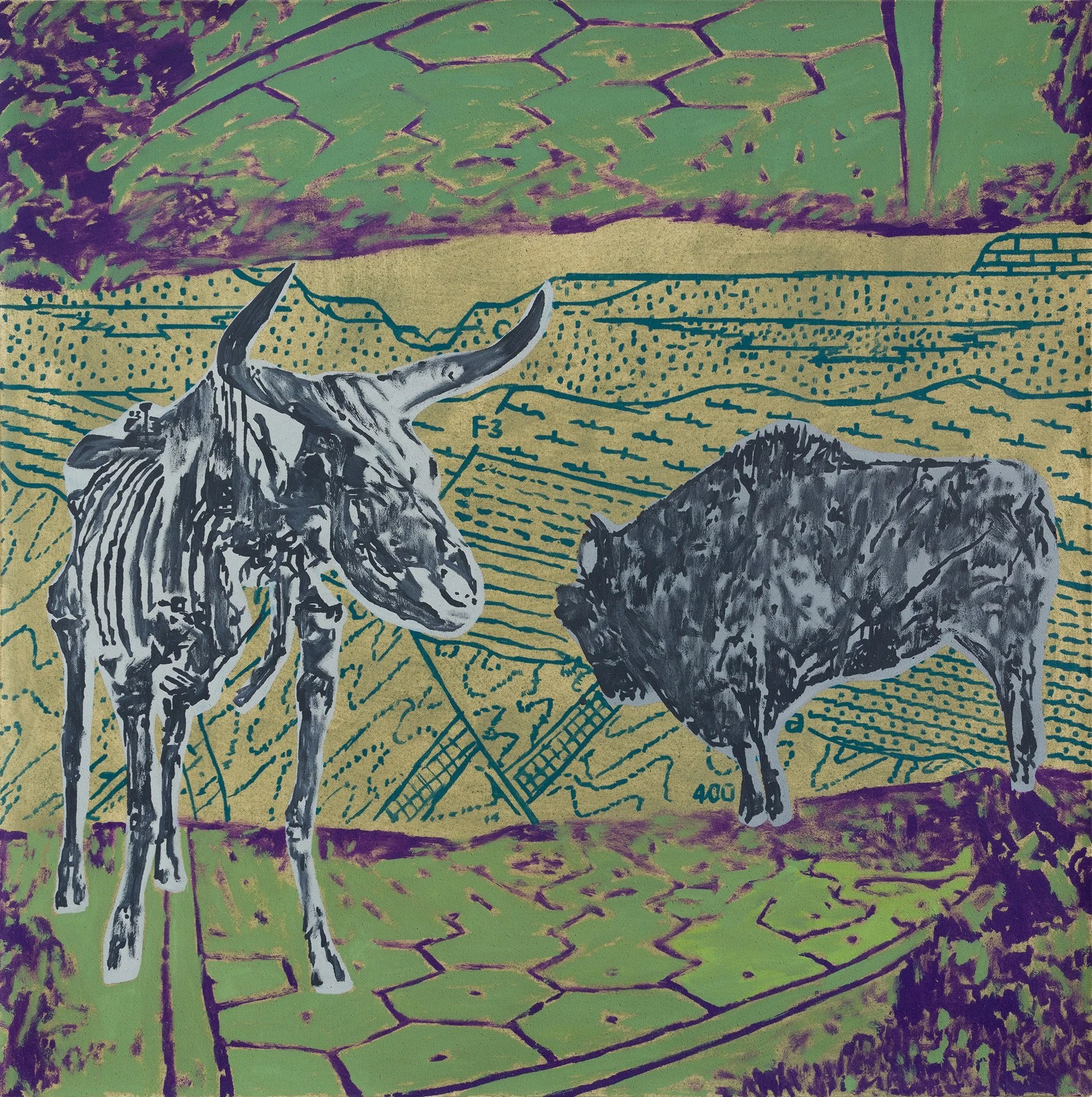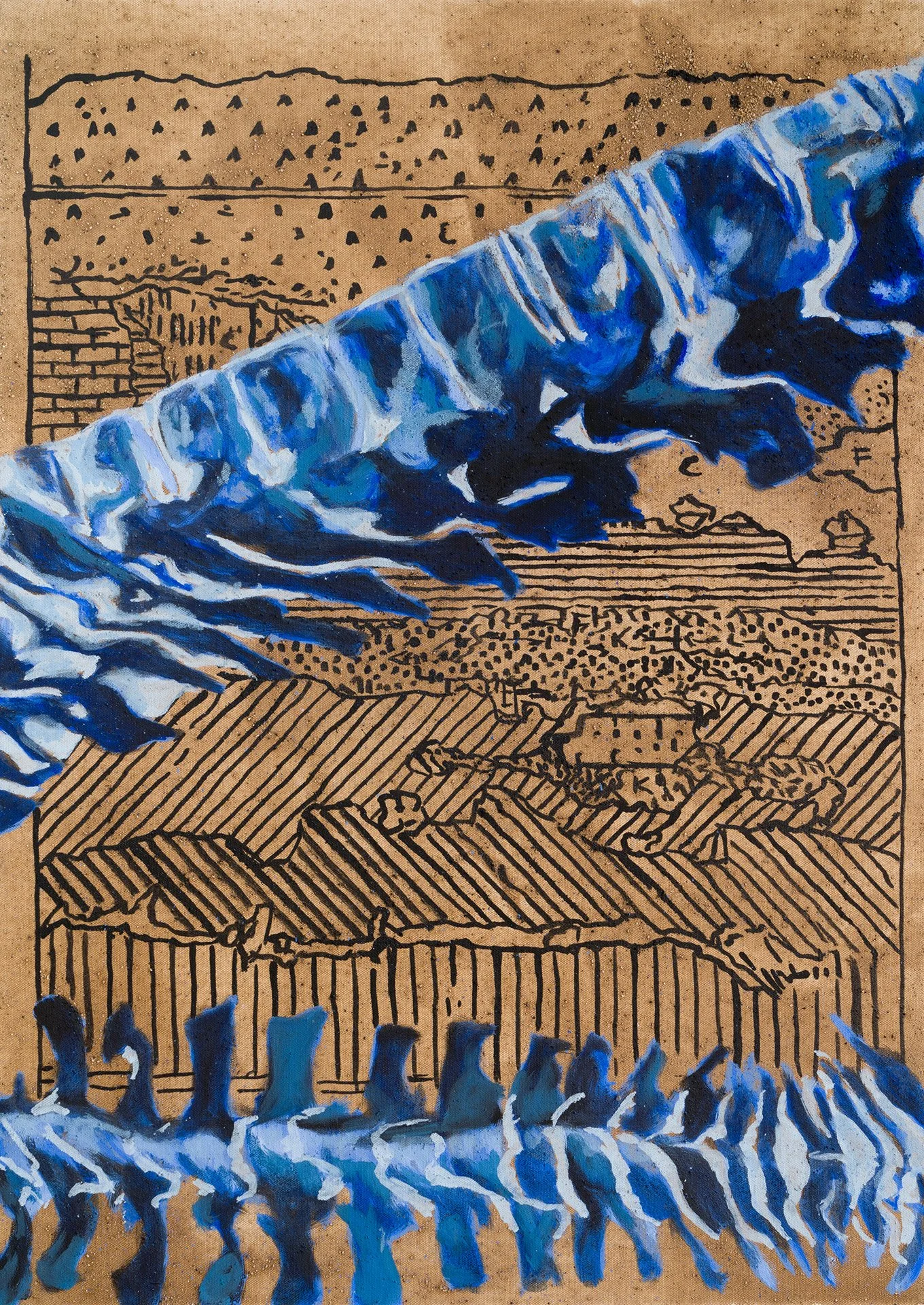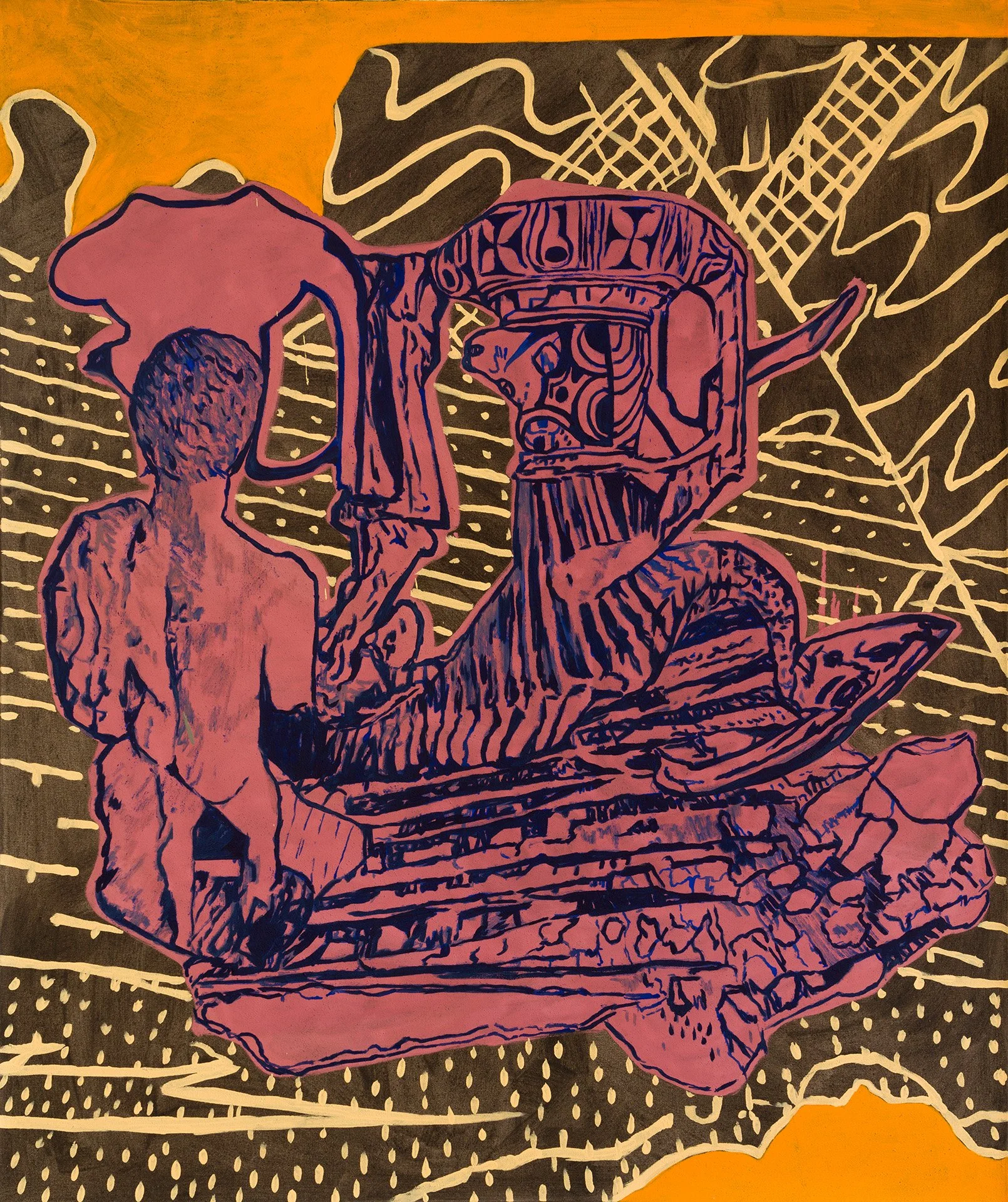MARIA JOSÉ CHICA
Resume
Bogotá, Colombia.
María José Chica was born and continues to base her practice in Bogotá, Colombia. Her work unites geology, archaeology and art, drawing parallels between the layers of the Earth and the history of human existence. A meditation on the physical and conceptual accumulation of time, it reveals the interconnectedness between past, present and future. Her work has come to incorporate natural pigments from soils and minerals collected from diverse geographies, reflecting a reverence for the natural world, as well as resonating with the spirit of place and the vastness of geological time.
Chica received her BFA from the National University of Colombia, Bogota, Colombia, and her MFA from Central Saint Martins College of Art and Design, London, UK. She has exhibited with institutions internationally, including the Material Art Fair in Mexico City, the Untitled Art Fair in Miami, and Gallería el Museo in Bogotá, among others.
-
Maria José Chica explores the ways in which cultural and geographic roots intertwine to shape personal identity as part of the collaborative cross-cultural exhibition “Interlace”. This exhibition offers a dynamic dialogue between Latin American heritage and the lived realities of migration, weaving together narratives of belonging, transformation and cultural exchange. By bringing Chica's work from SKETCH Gallery in Bogotá to CAM Galería in Mexico City, she contributes a unique perspective, merging temporal and terrestrial layers to reflect on the intersection of history, identity and place.
Maria José Chica, based in Bogotá, Colombia, is a painter deeply committed to examining the temporal and material compounds that define identity. Her practice is inspired by the geological and archaeological transformations of landscapes, juxtaposing the physical layers of the land with human histories. Using archival images, natural pigments and ambiguous compositions, Chica's work embodies a profound meditation on the continuity between past and present. Through her painterly explorations, she seeks to dissolve linear conceptions of time, revealing how histories, like landscapes, are constructed from accumulation and erosion.
-
MARÍA JOSÉ CHICA VILLA
Lugar y año de nacimiento Bogotá, 16 de Agosto de 1986
E-mail / Página web mariajosechicav@gmail.com - www.mariajosechica.comESTUDIOS REALIZADOS
2004 –2009 Carrera de Artes Plásticas en la Universidad Nacional de Colombia.
2006 –2007 Un año de intercambio estudiantil en Barcelona, España en la Facultad de Artes de la Universidad de Barcelona.
2011-2013 Maestría en Artes Plásticas en Central Saint Martins College of Art and Design. Londres, Reino Unido.EXPERIENCIA LABORAL
Desde 2014 Profesora de Arte. Gimnasio Vermont. Bogotá.
EXPOSICIONES INDIVIDUALES
2025 Sustrato. Espacio El Dorado. Bogotá. 2025 CAM Gallery. Ciudad de México.
2024 Picurearse. Espacio El Dorado. Bogotá. 2023 Sustrato. TIM Gallery. Santiago de Chile. 2022 Resulta. Sketch Gallery. Bogotá.2019 Calendarios. Espacio El Dorado. Bogotá.
2018 Tiempo Estimado. Galería SN Macarena.Bogotá.
2018 Sobre el cielo, la Tierra. Galería Liberia Central Contemporánea. Bogotá. 2016 Unidades y Conjuntos. Galería Doce Cero Cero. Bogotá.
2014 Mudanza. Espacio independiente Salón Comunal. Bogotá.EXPOSICIONES COLECTIVAS
2024 Ficciones domésticas. Galería La Cometa. Medellín. 2023 Buscando El Dorado. Espacio El Dorado. Bogotá 2022 En el Jardín de Epicuro. Espacio El Dorado. Bogotá 2022 Traslación. Espacio El Dorado. Bogotá
2022 Doble programa. Espacio El Dorado. Bogotá
2021 Pintura Inmortal 3. Galería El Museo. Bogotá
2021 Vortic Art. Online exhibition. Espacio El Dorado. Bogotá
2019 Pintura Inmortal 2. Galería El Museo. Bogotá.
2019 Cielos. Espacio Independiente Salón Comunal. Bogotá.
2019 Murmurio. Espacio El Dorado. Bogotá.
2018 Subtropical. Sagrada Mercancía. Santiago de Chile.
2018 Pintura Inmortal. Galería El Museo.Bogotá
2017 II Salón de Arte Joven. Fundación Gilberto Alzate Avendaño. Bogotá.2017 Maravilla. Tienda Arca, Espacio KB. Bogotá.
2016 La colectiva del año. Espacio independiente Salón Comunal.Bogotá.
2016 En Medio. Espacio El Dorado. Bogotá.
2015 I Salón de Arte Joven. Fundación Gilberto Alzate Avendaño. Bogotá.
2015 La muestra del Año. Espacio independiente Salón Comunal. Bogotá.
2015 Intervenciones, Espacios para la Ficción. Museo de Arte y Cultura de Colsubsidio. Bogotá.
2014 La muestra del Año. Espacio independiente Salón Comunal. Bogotá.
2013 Portable Paradise. The Invisible Line Gallery. Londres.
2013 Show One. Exposición final Master in Fine Art. Central Saint Martins College of Art and Design. Londres.
2012 On being different and the same at the same time. Central Saint Martins College of Art and Design. Londres.
2012 Community. Central Saint Martins College of Art and Design. Londres.
2012 MA Fine Art Interim Show, V22 The Biscuit Factory. Londres.
2009 XX Muestra de Trabajos de Grado. Universidad Nacional de Colombia. Bogotá.PROYECTOS
2022 Artista invitada al proyecto Buzón2 de MasAllá.
2010 Animación presentada durante el concierto del grupo de música antigua “Como era en un principio”, en el Festival Internacional de Guitarra Compensar, Bogotá, Colombia y en el Festival de Música Antigua en Lima, Perú.
2011 Video instalación para el concierto del grupo “Como era en un principio en el Teatro Mayor Julio Mario Santo Domingo, presentado durante el Festival de Música Barroca “Bogotá, Antigua, Sacra y Virreinal”.
2016 Diseño y arte del disco Mira cómo bailas de la agrupación Como era en un principio.RESIDENCIAS
2016 Artista residente. Residencia Silence, Awareness, Existence en Arteles Creative Center, Finlandia. Diciembre.
2019 Preseleccionada (Fase entrevista) Junio 2019 , Rijksacademie. Amsterdam, Holanda.FERIAS
2024 Feria Material, Stand Sketch Gallery, con el proyecto Cortar la piedra. Mexico 2023 Feria Untitled, Stand Sketch Gallery, con el proyecto 4555 millones de años.
OTROS
2016 Texto Unidades y Conjuntos publicado en el libro En medio, Ed. La Bachué, como parte de la exposición sobre pintura con el mismo nombre en el Espacio El Dorado. Bogotá 2013 Pre-seleccionada para el Threadneedle Prize for Painting and Sculpture y la convocatoria Contemporary Visions IV de la Galeria Beers.Lambert en Londres.
COLECCIONES
- Colección Banco de la República de Colombia - Colección de Arte Davivienda
- Colección Proyecto Bachué
- Colección María Wills- Colección Eloísa Genish







